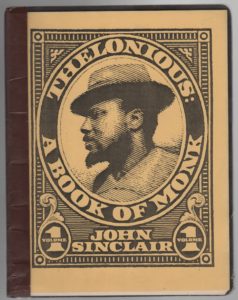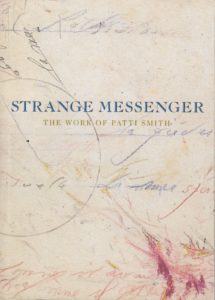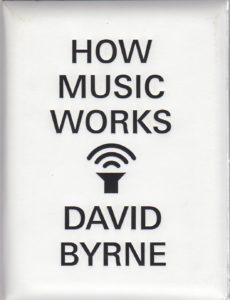Catalogue 15
Scarce historical essay on the 19th century African American actor, written by an African American writer, and published by an African American printer (Robert Lewis Pendleton, husband of the writer Leila Amos Pendleton.) Frontispiece illustration of Aldridge in costume as Othello.
Peyton surveys the existing literature on Aldridge, noting that popular biographical sketches left a gap between his early apprenticeship as a carpenter in Maryland and his emergence on the English stage years later: a narrative that “says nothing of his opportunities, his preparation and his struggles.” Peyton reconstructs Aldridge’s youth and early career from contemporary interviews, giving a fuller account of the racist audience reception in America that led him to Europe. Notably, Peyton accepts as true the story of the actor’s early childhood in Senegal; later biographers concluded that Aldridge invented this background as part of his showmanship and self-mythologizing. In a lengthy discussion of his starring role in Aphra Behn’s “Oronooko,” Peyton considers the special problem for the actor of accurately representing an African prince — as written by an English writer — with “no literature or traditions to respond to his inquiry for instruction and guidance.” Peyton’s analysis of Behn’s text and Aldridge’s choices lead him to conclude that Aldridge achieved a depth of psychological realism beyond the reach of even Edmund Kean.
Peyton gives a glowing account of Aldridge’s many European successes – association with Alexandre Dumas; a second marriage to a Swedish baroness – until his death in 1867, just as “[p]rejudiced America was now in a mood to acknowledge the worth of a man who was forced to leave her shores to obtain an opportunity.” OCLC locates 11 holdings.
“I am not a special person. I am not especially strong; I am not especially gifted. I simply do not like to show my weakness, and I hate to lose, so I am a person who tries hard. That’s all there is to me.” Modeled in part on Jean Renoir’s memoir (one of Kurosawa’s greatest influences), SOMETHING LIKE AN AUTOBIOGRAPHY was published in Japan in 1981 before appearing in English translation (by Audie E. Bock) the following year. Covering the legendary film director’s childhood, through his apprenticeship, and culminating in 1951 when he won the Golden Lion at Cannes for RASHOMON, the book unfolds episodically over more than 50 short chapters. Scarce signed first edition from one of the most important film directors of the 20th century.
Program booklet for Havel’s first play, performed for the first time at the opening of the 1963-64 season at the Balustrade Theater (Divadlo na zabradli). A absurdist satire on the Communist regime, The Garden Party’s protagonist manages to inhabit, conform to, and succeed within a mystifying bureaucratic landscape without understanding it and without being truly recognized. Havel felt a deep affinity for Kafka (“I sometimes feel that I’m the only one who really understands Kafka,” he would later say); a current of paranoia and alienation runs alongside the political message of The Garden Party, as does the theme of the failure of language to carry meaning in the form of concrete poems throughout. The play was produced five years before the Prague Spring and 26 years before Havel — playwright, poet, political dissident, devoted fan of the Velvet Underground — would be elected president. “There is something about him that attracts you,” Lou Reed would say, after meeting Havel; “It’s a magnetic power.” Rare ephemera from from this important writer and dissident. And while our Czech isn’t great, a dilligent search of OCLC suggests no holdings.
Complete 15-year run of the arts and entertainment magazine. A successor to Ballroom Dance Magazine, AFTER DARK was a pioneering gay publication that neither explicitly acknowledged its target audience nor made any pretense of hiding it — simply locating gay icons at the center and forefront of mainstream creative culture. An essential part of the 1970s’ landscape, AFTER DARK was described as “an audacious mass-market experiment in gay eroticism” by Daniel Harris (The Rise and Fall of Gay Culture (1997). In its early years, the magazine gave considerable space to suggestive photo spreads of innumerable male celebrities and dancers; however, in the late 1970s, Patrick Pacheco succeeded WIlliam Como as editor, focusing on serious criticism and reducing the number and size of photographs. Declining sales led his replacement, Louis Miele, to reverse course and return to the original formula, but the magazine’s run nevertheless came to an end in 1983.
With articles on dance, music theater, film, urban nightlife, bodybuilding and men’s fashion, feature subjects included Maria Callas, David Bowie, Candy Darling, Jane Fonda, Diana Ross, Liza Minnelli, Rudolf Nuryev, Mikhail Baryshnikov, Dolly Parton, Mae West, Tab Hunter, Richard Gere, Joan Crawford, Tommy Lee Jones, Barbra Streisand, Donna Summer, Shirley Bassey, Robert Redford, and Paul Newman — among many others. A vital record of the 1970s and a foundational piece of gay cultural history.
An uncommon issue of FILM CULTURE. A collection of Stan Brakhage’s writings on film with black and white photograph illustrations throughout. With a lengthy question and answer between Brakhage and the issue’s editor, P. Adams Sitney as introduction. Pressed cardboard wraps designed by George Maciunas. A well preserved issue of this fragile production.
Original placard for the multi-day, multimedia presentation of MacLise’s Rites of the Dreamweapon staged during the first week of Jonas Mekas’ New Cinema Festival (Expanded Cinema Festival). In November and December of 1965 Mekas presented an extensive series of multimedia productions including artists Angus MacLise, Jack Smith, and Nam June Paik, among others. It’s possible, but not confirmed that The Velvet Underground took part in the events. [“White Light/ White Heat: The Velvet Underground Day by Day,” p. 58.]
The program for the first week consisted of the following: “Rites of the Dreamweapon II” [MacLise]; “The Stagger Mass” [Jerry Joffen]; “The Mysteries of the Essence Chamber” [MacLise]; “Epiphany of Light” [Don Snyder]; “Rehearsal For the Destruction of Atlantis” [Jack Smith]; ‘Rites of the Nadir’ [John Vacarro]. Though not noted here, the evening of November tenth also saw the screening of Piero Heliczer’s ‘The Last Rites.” A striking ephemeral document from the downtown avant garde film and music scenes.
Similar to MacLise’s earlier “Year,” The New Universal Solar Calendar renames the days of the year, but in this format prints the phrases in his characteristic calligraphic hand, producing a full artwork that actually seems to take itself a bit more seriously than most of the multiples produced by Macianus at the time. Fluxus Codex page 398. Rare. OCLC locates only one example, included in the Angus MacLise papers held by Columbia University.
Similar to MacLise’s earlier “Year,” The New Universal Solar Calendar renames the days of the year, but in this format prints the phrases in his characteristic calligraphic hand, producing a full artwork that actually seems to take itself a bit more seriously than most of the multiples produced by Macianus at the time. Fluxus Codex page 398. OCLC locates only one example, included in the Angus MacLise papers held by Columbia University. Rare, even more so inscribed as here.
Concert program for Tyrannosaurus Rex’s seven-date tour in February-March of 1969, directly before the departure of Steve Peregrine Took and T.Rex’s shortening of the band name. Program includes song lyrics from the albums Unicorn (1969) and Prophets, Seers & Sages: The Angels of the Ages (1968), followed by photographs of Marc Bolan and Steve Peregrine Took. Also pictured are John Peel “and his ladye” (a hamster); Peel, an early and enthusiastic promotor of Bolan’s work, was also featured on the Unicorn track “Romany Soup.” The final program page is a full-page ad for Bolan’s first book of poetry, THE WARLOCK OF LOVE, to be published in March of that year.
David Bowie also appears on the cover, billed last, as a mime. Bowie trained seriously with Lindsay Kemp, himself a student of Marcel Marceau; his opening act for this tour, though not described in the program, was a one-man depiction of China’s invasion of Tibet, and as you might imagine it was met with some hostility by audiences. Bowie and Bolan first met in 1964 when both were teenagers; Bowie’s rise to fame came several years after Bolan’s and eventually eclipsed it, contributing to a rivalry that became increasingly one-sided and would persist until 1977, when the two reportedly reconciled just a short time before Bolan’s fatal accident. A rare document from the dawn of Bowie’s career, and highlighting an underappreciated art form that would continue to inform his work and practice for the rest of his life.
In 1970, Gertrude Kurath, on an anthropology grant, was tasked with writing a book of the basic history and techniques associated with modern experimental rock music. Kurath, while being a leading scholar on both American Indian and modern American dance, was not well-versed in the form, and sought help from Roger Miller, a guitarist and composer who would later co-found seminal postpunk band Mission of Burma. At the time, Miller led a band called Sproton Layer, and gave Kurath a copy of their first (and ultimately, only) full length album, “With Magnetic Fields Disrupted.”
“With Magnetic Fields Disrupted” explores modern rock techniques and sounds that were later subsequently categorized as no wave and proto-punk. The text accompanying Miller’s score, drawings, and lyrics, by Kurath and Miller, is a technical treatise on the conceptual and sonic techniques used to make the album.
A cult classic, the short novel was legendarily written by a 14-year-old “closet punk” as a school essay, discarded until his mother (allegedly) rescued it from the trash. Rising to glory via doing one’s homework isn’t very punk, some might say, but he was only young. The Punk’s doomed antiheroes, struggle valiantly against the twin evils of Teddy Boys and the Employment Exchange only to end in a pool of blood. Full of sage observations to educate the non-initiate (“Punks like to have odd, and often depressing names, as in their nature.”). One of only 500 copies produced in the first edition, with original safety pin still securely fastened through the cover image of Johnny Rotten’s upper lip. This copy, from the personal library of Heathcote Williams (who also published a book through Polytantric Press in 1977 and likely knew Gideon Sams from that connection), is signed by Sams. Rare thus, the author died young at 26. (#22722)
Handbill program advertising the grand opening of CBGB’s Second Avenue Theater, Hilly Krystal’s short-lived attempt at running a second, larger concert venue in what was once the Anderson Theater. Upcoming shows included Talking Heads with “2 special guest bands” (identified elsewhere as The Shirts and Tuff Darts), December 27; The Dead Boys, with The Dictators and “The New Luna Band,” December 28; and Richard Hell and The Voidoids with Patti Smith Group playing December 29, 30, and 31. (On the second night — Smith’s birthday — Bruce Springsteen would appear for “Because the Night” as an unannounced guest.) With bios for the three headliners plus an extra featurette for The Dead Boys.
Seventh draft script for an unproduced film. A fabled project helmed by Russ Meyer, along with then-screenwriter Roger Ebert (who penned “Beyond the Valley of the Dolls” in 1970), that was to have been a vehicle for the Sex Pistols, who in 1977 were in their prime. Roger Ebert’s involvement ended with the second draft, and revisions by Meyer and Malcolm McLaren continued until at least this draft. Original story by McLaren, Ebert, Meyer, Rene Daalder and Rory Johnston.
Archive of vintage press agency photos of the Sex Pistols, the majority taken in 1978. Includes photos by Adrian Boot, Paul Cox, Richard Young, and Jill Furmanowsky, all for the London Features International agency. The remaining photos are identified by press agency name only. Images include: the Sex Pistols in a more or less neat and orderly line against a wall (mislabelled “Original line-up”); the first concert of the band’s first and only U.S. tour, at the Great Southeast Music Hall, Atlanta, shot from stage mid-performance; multiple portraits of Johnny Rotten and Sid Vicious, on and off stage; and Steve Emberton’s famous shot of Sid and Nancy handcuffed together (marked with agency attribution only). The final photo shows a post-Pistols Sid Vicious in concert at the Camden Electric Ballroom with the Vicious White Kids on August 15, 1978: his last performance in England before his overdose the following February. The band, formed for one concert only, included Glen Matlock, Steve New, and Nancy Spungeon, pictured here just two months before her own death. Also included are an undated headshot of Steve Cook, John Lydon circa PiL, and a 1987 photo of Steve Jones, on a Harley, in Hollywood. A badass collection featuring some iconic images.
Rare early hip-hop flyer for this “convention” held at the Audubon Ballroom (166 Broadway in Harlem – the same ballroom in which Malcolm X had been assassinated thirteen years earlier) in early Dec. 1978. Featuring some of the most important figures in early rap: DJ [Grandwizard] Theodore (widely credited with inventing scratching), Kevie Kev (member of the Fantastic Five), The Funky Four (Raheim, KK Rockwell, Keith Keith, and Sha-Rock — the first female MC), Lovebug Starski (perhaps the earliest coiner of the term “hip-hop”), DJ Breakout (soon to join the above Funky Four as the Funky 4 + 1), DJ Jones, Mean Gene, Casanova Fly (aka Grandmaster Caz, whose lyrics – it is now generally recognized – were plagiarized by Big Bank Hank in “Rapper’s Delight”) and many others pioneering MCs and DJs. A jaw-dropping lineup from the “disco rap” era and an important survival.
Early issue under the tenure of Naylor and Carroll of this hugely influential Manchester-centric post-punk zine. An indispensable reference for the Manchester scene and the bands and labels that grew around it: Joy Division and New Order, The Smiths and The Fall, Factory Records and the Hacienda nightclub, etc. John Peel called City Fun the most important zine of the period and former Hacienda DJ Dave Haslam has written: “‘City Fun’ was breaking the classic fanzine formula, just as post-punk music itself sought to break beyond punk formulas. ‘City Fun’ was never just about the music, and, under Naylor and Carroll it increasingly moved its gaze away from the local music scene, always looking at the bigger cultural landscape. Covering film, politics, and sexism, plus insightful psychogeography and anti-James Anderton diatribes, in many ways from its mid-period onwards, it had more in common with the underground press of the early 1970s (eg ‘Mole Express’) than it did with ‘Sniffin’ Glue’” (http://www.mdmarchive.co.uk/cityfun/). Contributors to this issue include: Richard Witts, Andy Zero, Paul H, Godzilla, Tracey Longden, Nicky, Alan Wise, and Dave Thing writing on A Certain Ratio, Joy Division (their Feb. Osborne Club date – a benefit for CITY FUN), The Teardrops, The Clash and more (including a glossary or local slang). Issues have become quite scarce. Indeed, OCLC finds only two locations for any issues, both in the UK (BL and V&A).
Five early issues of the members’ newsletter from the legendary Manchester club, started and supported by Factory Records and New Order. Includes reports from the infamous club, reviews, schedules, etc. Individual issues are scarce; runs of any kind rare. OCLC locates no copies of any issue (or even the title).
Break dancing history, method, and technique, generously illustrated throughout with photographs, some in color. Traces the popular emergence of the dance style in the ’80s from 1970s teenage street culture in the Bronx, evolving alongside contemporary American dance troupes’ adaptation to the influence of West African social dance. Includes chapters on Warm Up and Safety, Break Instructions, Electric Boogie Instruction, Starbreaking: Break Dancing…Celebrity Style, and Fashion.
Preliminary advice as fresh today as it was in ’84 (i.e. ask your doctor before attempting to break; check your chosen surface for nails and broken glass) soon gives way to a detailed stretching routine and specific step-by-step guides to headspins, elbow spins, windmills, popping, the Robot, and the Moonwalk — the latter three being Electric Boogie moves, strictly distinguished by Marlow from breaking: “Clearly, Boogie is Boogie and Breaking is Breaking, and never the twain shall meet.”
BREAK DANCING was published the same year as David Toop’s THE RAP ATTACK and Steven Hager’s HIP HOP and is likewise an early, essential mass-market guide to hip hop culture. Uncommon. (#23390)
Henry Rollins’ first publication. Includes 19 prose pieces (“stuff,” in Rollins’ preferred parlance) with artwork by Raymond Pettibon, here billed as “Pettbon.” According to James Parker in his Rollins biography TURNED ON, “[f]ive hundred copies were printed, and they sold out in two weeks” (171). Not the more common reprint, issued later that same year to meet this demand. Scarce. Only the third in trade we’ve seen, and just the second we’ve handled. OCLC locates a single copy (Utah St.). Not in Ohrt.
An original hand drawn animation sheet used in the making of Aha’s famed music video for “Take On Me,” featuring band keyboardist Magne Furuholmen. This was drawn by animator Michael Patterson for the video and was obtained from a music executive who worked on the video (signed letter of provenance provided). At the 1986 MTV Video Music Awards, the video for “Take on Me” won six awards—Best New Artist in a Video, Best Concept Video, Most Experimental Video, Best Direction, Best Special Effects, and Viewer’s Choice (and was nominated for two others: Best Group Video and Video of the Year). It remains one of the most iconic videos of all time.
Poems inspired by, and borrowing titles from, the jazz legend. Written in the early and mid 1980s following several years of poetic inactivity. Sinclair performed these pieces both solo and with his backing band, the Blues Scholars; an album version of the verse sequence would eventually be released in 1996. Though colophon states the book “will be published […] in a first trade edition of 500 copies,” we find none in trade (August 2018) and only one location in OCLC (BL), which suggests to us that only these privately circulated editions (there was also an “author’s manuscript edition” of 26) were ever produced. Rare.
Catalog of an exhibition first held at the Andy Warhol Museum, Pittsburgh. Survey of Smith’s creative work includes selected drawings, photographs, poetry, and prose works, from the late 1960s through the turn of the 21st century. With exhibition checklist and essays by David Greenberg and John C. Smith.
In Byrne’s words, “neither an autobiography nor a series of think pieces–but a little bit of both.” Each chapter focuses on a distinct aspect of music: technology, history, performance, technique, et cetera. Includes Byrne’s account of his art school years and first attempts at performance in the early ’70s. With endnotes. Cover design by Dave Eggers.

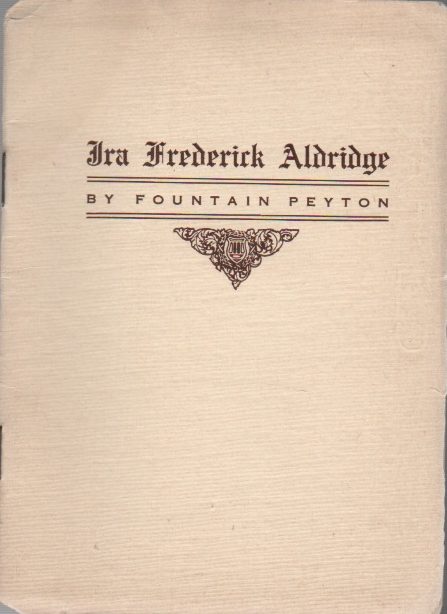
![80. [Film]. KUROSAWA, Akira. SOMETHING LIKE AN AUTOBIOGRAPHY [Signed]. Image](http://catalogue15.briancassidy.net/wp-content/uploads/2019/05/23276-202x300.jpeg)
![81. HAVEL, Vaclav. ZAHRADNI SLAVNOST [The Garden Party]. Image](http://catalogue15.briancassidy.net/wp-content/uploads/2019/05/23234-300x300.jpg)
![82. COMO, William (Editor). AFTER DARK: The National Magazine of Entertainment [Complete run of 159 issues]. Image](http://catalogue15.briancassidy.net/wp-content/uploads/2019/06/23333d-242x300.jpeg)
![83. BRAKHAGE; [Stan and Jane]. METAPHORS ON VISION [Film Culture Issue Number 30, Fall 1963]. Image](http://catalogue15.briancassidy.net/wp-content/uploads/2019/06/23176-e1560514524656-225x300.jpeg)
![84. [Angus MacLise, Jack Smith, et al]. NEW CINEMA FESTIVAL I AT FILMMAKER](http://catalogue15.briancassidy.net/wp-content/uploads/2019/06/angus3-134x300.jpg)
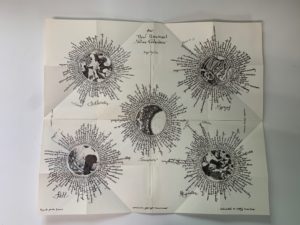
![85. MACLISE, Angus. THE NEW UNIVERSAL SOLAR CALENDAR [Inscribed]. Image](http://catalogue15.briancassidy.net/wp-content/uploads/2019/06/23716-277x300.jpeg)
![87. MACLISE, Angus. [Original Drawing in Marker]. Image](http://catalogue15.briancassidy.net/wp-content/uploads/2019/06/23717-162x300.jpeg)
![88. [BOWIE, David]: [T-Rex]. FOR THE LION AND THE UNICORN IN THE OAK FORESTS OF FAUN. Image](http://catalogue15.briancassidy.net/wp-content/uploads/2019/06/22977-e1560469833786.jpeg)
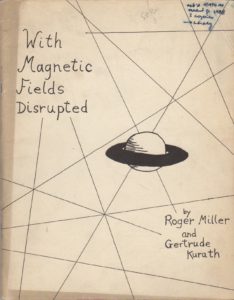
![90. SAMS, Gideon. THE PUNK [Signed]. Image](http://store.briancassidy.net/cassidy/images/items/22722.jpeg)
![91. [Punk]: [CBGB](http://catalogue15.briancassidy.net/wp-content/uploads/2019/05/23242-195x300.jpeg)
![92. MEYER, Russ and Roger Ebert, Malcolm McLaren [Sex Pistols]. WHO KILLED BAMBI? Image](http://catalogue15.briancassidy.net/wp-content/uploads/2019/06/23718-1-e1560713064614.jpeg)
![93. [Punk]: [Sex Pistols]. [Sex Pistols Press Photo Archive]. Image](http://catalogue15.briancassidy.net/wp-content/uploads/2019/06/23649c-300x246.jpeg)
![94. [Hip-Hop]. DISCO HISTORY / AUDUBON / Dec 8 Sparkle 6 D.Js Convention [Original 1978 Flyer]. Image](http://catalogue15.briancassidy.net/wp-content/uploads/2019/05/23277-233x300.jpeg)
![95. ZERO, Andy et al, Contributors. CITY FUN - No. 19 (Seventh of the Third Nineteen Eighty) [March 3rd, 1980]. Image](http://catalogue15.briancassidy.net/wp-content/uploads/2019/06/23295-216x300.jpeg)
![96. [Factory Records]. SAVAGE, Jon. FAC51 - THE HACIENDA MEMBERS NEWSLETTER [5 issues: Nos. 3, 4, IV [4.5], 5, 6]. Image](http://catalogue15.briancassidy.net/wp-content/uploads/2019/06/23325-218x300.jpeg)
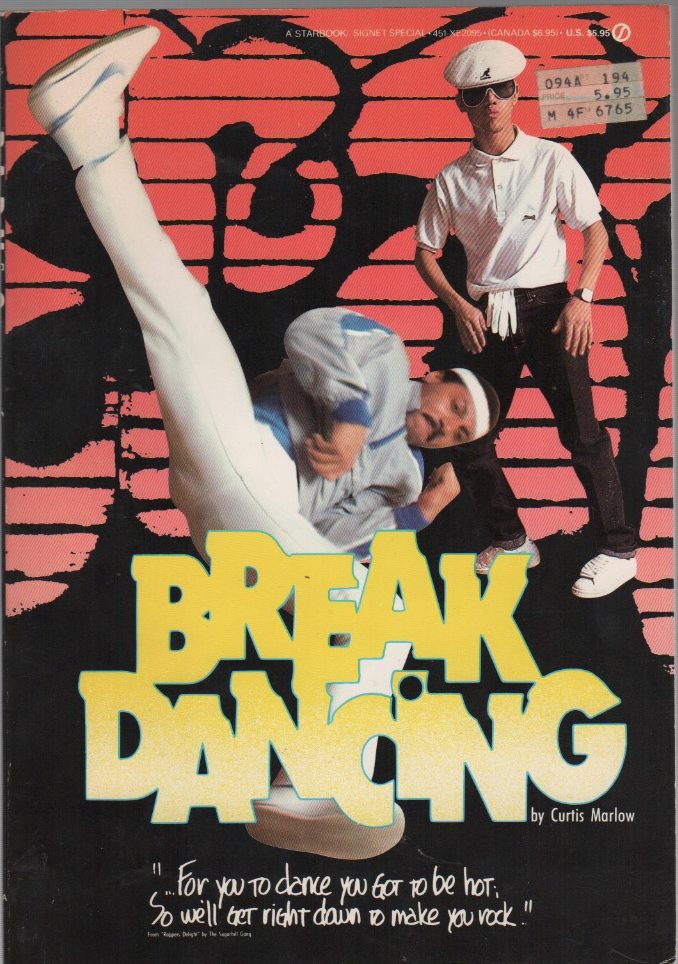
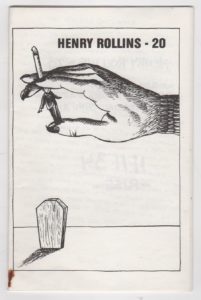
![99. [Synth-Pop]: [A-HA]. PATTERSON, Michael (Artist). [Original Pencil Sketch/Still Utilized in Video for Take on Me] Image](http://catalogue15.briancassidy.net/wp-content/uploads/2019/05/23111-1-e1558810315905.jpeg)
